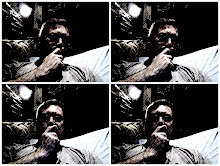 I wake and feel the fell of dark, not day.
I wake and feel the fell of dark, not day.What hours, O what black hours we have spent
This night ! what sights you, heart, saw ; ways you went!
And more must, in yet longer light's delay.
With witness I speak this. But where I say
Hours I mean years, mean life. And my lament
Is cries countless, cries like dead letters sent
To dearest him that lives alas ! away.
I am gall, I am heartburn. God's most deep decree
Bitter would have me taste: my taste was me;
Bones built in me, flesh filled, blood brimmed the curse.
Selfyeast of spirit a dull dough sours. I see
The lost are like this, and their scourge to be
As I am mine, their sweating selves; but worse.

"No Worst"
No worst, there is none. Pitched past pitch of grief,
More pangs will, schooled at forepangs, wilder wring.
Comforter, where, where is your comforting?
.... Life death does end and each day dies with sleep.

"Carrion Comfort"
Not, I'll not, carrion comfort, Despair, not feast on thee;
Not untwist slack they may be these last strands of man
In me or, most weary, cry I can no more. I can.
Can something, hope, wish day come, not choose not to be.
But ah, but O thou terrible, why wouldst thou rude on me
Thy wring-world right foot rock ? lay a lionlimb against
me scan?
With darksome devouring eyes my bruised bones? and fan,
O in turns of tempest, me heaped there ; me frantic to
avoid thee and flee ?
Why? That my chaff might fly ; my grain lie, sheer and clear.
Nay in all that toil, that coil, since (seems)! kissed the rod,
Hand rather, my heart lo! lapped strength, stole joy,
would laugh, cheer.
Cheer whom though? the hero whose heaven-handling
flung me, foot trod
Me? or me that fought him ? which one ? is it each one?
That night, that year
Of now done darkness I wretch lay wrestling with (my
God) my God.


















